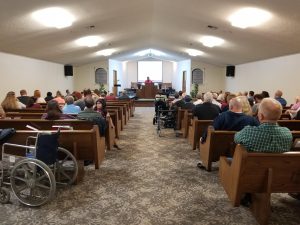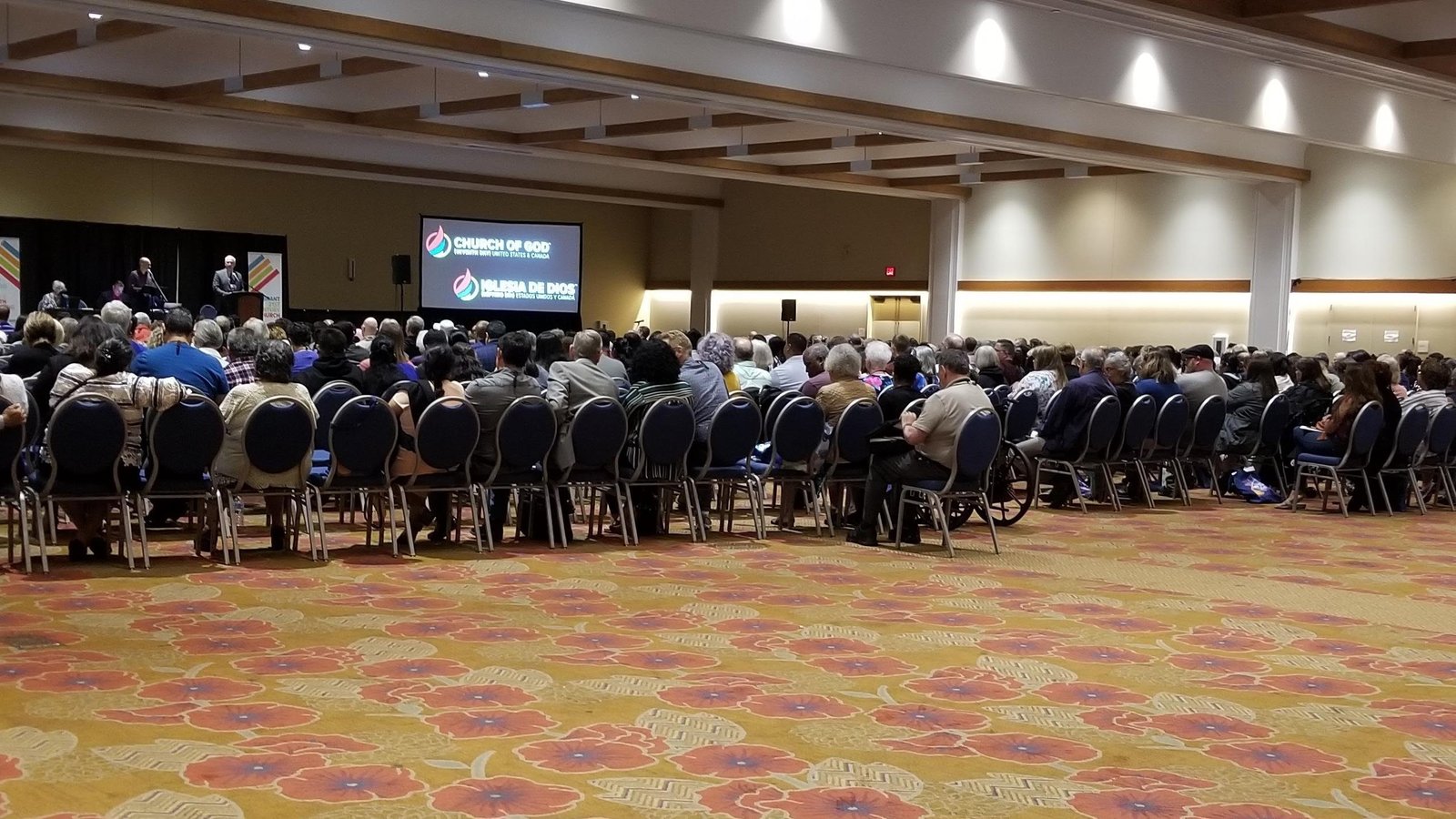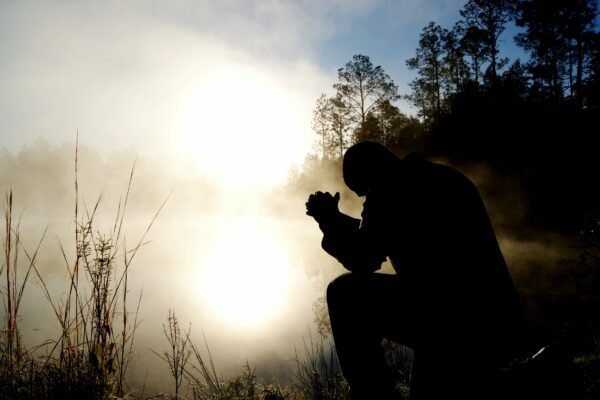Why Be a Leader in the General Conference? Read more to find out why.
When I first started taking classes through LifeSpring School of Ministry (now Artios Christian College), my main motivation was to learn more about the Bible. After the first semester, I realized that I could be a support to the leaders of my local church and of assistance to others in the congregation if I took more classes. People were coming to me for advice, so I decided that I needed to be better equipped in knowledge and spirituality.
Every member is a potential leader
Now, after taking more classes, I am inspired to go as far as possible in my studies at Artios. Every member of each congregation within the Conference is a potential leader. It is going to take all of us to continue with the task that Jesus gave to His original disciples. “’… All authority in heaven and on earth has been given to me. 19 Therefore go and make disciples of all nations, baptizing them in the name of the Father and of the Son and of the Holy Spirit, 20 and teaching them to obey everything I have commanded you…’”. [1]
While studying the history of the Church of God (Seventh Day), one of the things that impressed me most was the willingness to change, without sacrificing values. A good example of this is reflected in the narrative of Gilbert Cranmer, who is credited with being the founder of the Church of Christ, in Michigan. As detailed in The Story the Church of God (Seventh Day), Cranmer’s journey from a teenaged, Methodist-Church convert to the president of the Church of Christ conference was not an easy one.[2]
Early Church of God (Seventh Day) History
Coulter writes that after preaching for two years as an exhorter, Cranmer left the Methodist Church and became licensed to preach for the Christian Church. Cranmer traveled through several states, preaching and studying. Coulter tells us that Cranmer came to accept the theory of the second coming of Christ in 1843, and that, unlike many others, after the much anticipated second coming did not happen on October 22, 1844, Cranmer did not lose faith, and he “…continued to preach the second advent of Jesus Christ the remainder of his life.”[3]
Cranmer continued to travel, preach, and study. He embraced the seventh-day Sabbath when it came to his attention. He joined the Adventists James and Ellen G. White but left the group when he disagreed with some of their teachings and claims. Cranmer managed to collaborate with ten congregations that shared his beliefs and led the organization of a conference in Michigan in 1860; in 1863, the conference took on the name ‘Church of Christ’.[4]
Inspiring confidence
It inspires confidence to be a part of a conference that was initiated by someone who continued to search for the truth, even in the face of adversity and exclusion. Cranmer was not “church hopping,” and he was not acting from his own understanding. Even though he studied under other leaders, he seemed to take his main instruction from God, the Bible, and his faith.
The conference of the Church of Christ that was started by Gilbert Cranmer has grown and changed into The General Conference of the Church of God (Seventh Day). Along with this growth and change has come a structured and incorporated conference with a board of directors, area and district superintendents and representatives, various ministries, and a myriad of regulations, directives, and bylaws. Although to some this might sound complicated, and it can be, I see it as necessary and responsible.
A System of Check and Balances
I take comfort in being a member of a conference that has a system of checks and balances that seeks to ensure that the integrity of the Church is not compromised by those who seek to do things “their way” while still under the umbrella of the Conference. So far, I have not found anything about the Conference to be embarrassed by or ashamed of.
I am especially impressed by the fact that even though the church manual has over 80 pages of bylaws, regulations, and organizational structure, at the very beginning, the preamble states that “The General Conference recognizes Christ as the head of the church, a spiritual body of all believers who hold the faith of Jesus and keep the commandments of God. The church exists both locally and universally for the purposes of worshiping God, preaching the gospel, nurturing believers, and serving humanity.”[5]
Spreading God’s Word with integrity and faithfulness
The Conference sees fit to formulate rules, structure, and accountability, but the main purpose has not been overlooked. Rather than seeing the polity as a hindrance to ministry, I see it as a guide, source, and provider to make certain that all the congregations represented under the umbrella of the Conference can carry out the mission of spreading God’s Word with integrity and faithfulness.
One of the ways that the Conference is striving to assist congregations to grow and carry out their mission is to strongly promote the Turning Vision into Reality (TVR) campaign. The “Vision” refers to the one that inspired Pastor Whaid Rose to write A Dream in Progress. In this book, Brother Rose describes how he contemplated “What might our church look like under the most ideal circumstances?”[6] What started out as a thought turned into a “Vision of a Vibrant 21st-Century Church of God (Seventh Day).”[7]
10 Points of Focus
The ten points of focus of this “Vision” are fostering congregations that are: Christ Centered; Spirit Formed; Bible Based; Sabbath Celebrating; Distinct, Yet Inclusive; Passionate in Worship; Compassionate in Service; Engaging in Witnessing; United in Fellowship; and Committed to Discipleship.[8] It is inspiring to see this vision being supported and encouraged. I can imagine what it would look like for our Church if all its leaders were to catch on to the “Vision” and find ways to turn their respective congregations into lighthouses for their communities.
As a Christian leader, it is encouraging to be a member of a conference that wants to become relevant to today’s society, without compromising our original values and beliefs. Some other denominations seem to believe that in order to stay current, it is necessary to overlook Biblical guidelines. I am comfortable to be associated with an organization that seeks ways to acknowledge the norms of society without changing or defying our beliefs.

The State of Religion in America
It is especially vital that the Conference encourages our congregations to embrace TVR because of the state of religion in general in our country. According to Mark Chaves, “American religiosity has declined in recent decades.”[9] Even though people are turning away from modern-day religion, they are still seeking ways to find comfort, safety, love, and a “sense of self.”
Each one of us as leaders can find ways to help our communities and be ambassadors of Christ. We can all find ways to help those who never have believed, or who have once believed but have lost their faith, that even though they have turned away from God, He has not turned away from them.
An initiative to help end the stigma of mental illness
As a result of one of the classes that I took through Artios Christian College, I was inspired to start an initiative to facilitate the coming together of health providers and churches to help end the stigma of mental illness. I am grateful to be a part of a conference that wants its leaders to be trained and certified to carry out the work that God has called us to do.
[bctt tweet=”I was inspired to start an initiative to facilitate the coming together of health providers and churches to help end the stigma of mental illness. – Jacquelyn Scott”]
Why People have turned away
Over the course of the three years since I started my “Healthy Minds = Healthy Churches” initiative, I have attended many health-related seminars and workshops. One of the common threads that I heard when having small-group discussions and I shared about my personal ministry is that there are people who have turned away from their church because of the way that they or a family member was treated. All of us as leaders should do all we can to be certain that we are not numbered among one of those churches.
Our conference wants to become a “Vibrant 21st-Century Church.” For the sake of our families, our congregations, our communities, and our country, all of us should catch the vision. Take advantage of the support, encouragement, training, and structure that the conference offers. TVR can help all of us band together as we strive to have a positive impact on a country that is becoming more and more divided and losing faith in God.
- Interested in learning more about Artios Christian College? Click here.
- View the upcoming Artios class schedule here.
- Have questions about how you fit into Christian leadership? Check out these resources:
Notes
[1] Matt. 28:18-20, (NIV)
[2] Robert Coulter, The Story of the Church of God (Seventh Day). (Denver: Bible Advocate Press, 1983),
9-12.
[3] Robert Coulter, The Story of the Church of God (Seventh Day). (Denver: Bible Advocate Press, 1983), 10.
[4] Ibid, 13-14.
[5] Church Manual: Church of God (Seventh Day). (Denver: General Conference Church of God (Seventh Day), 2017), 2.
[6] Whaid Rose, Dream in Progress: The Vision of a Vibrant 21st-Century Church of God (Seventh Day). (Denver: General Conference of the Church of God (Seventh Day), 2011), ix.
[7] Ibid, x.
[8] Ibid, xiii.
[9] Mark Chaves, American Religion: Contemporary Trends. (new Jersey: Princeton University Press, 2017), 11.
Top photo: General Conference Convention 2019 Business Meeting
Inside photo: Super Sabbath October 2019 at Claremore, OK
BIBLIOGRAPHY
Chaves, Mark. American Religion: Contemporary Trends. New Jersey: Princeton University Press, 2017.
Church Manual: Church of God (Seventh Day). Denver: General Conference Church of God (Seventh Day), 2017.
Coulter, Robert. The Story of the Church of God (Seventh Day). Denver: Bible Advocate Press, 1983.
Rose, Whaid. Dream in Progress: The Vision of a Vibrant 21st-Century Church of God (Seventh Day). Denver: General Conference of the Church of God (Seventh Day), 2011.








